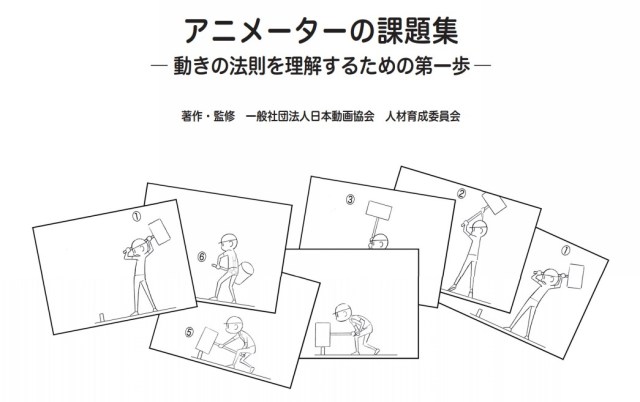
Animator Assignment Collection covers “First Steps Towards understanding the Principles of Motion.”
“Modern animation is all done with CG, right?” isn’t an uncommon assumption, and it is true that computers are playing an increasingly large role in animation production. However, the Association of Japanese Animations (AJA) wants aspiring anime artist to avoid becoming entirely reliant on machines when creating art.
“In recent years, the number of anime in which CG models are used for characters is increasing, but hand-drawn art is still an important part of many productions. The job of animator is to provide artwork that meets the needs of the project. Animators, professionals of motion, have a vital occupation,” says the association, and in keeping with that belief, it’s recently released a series of animator art drills that it calls the Animator Assignment Collection.
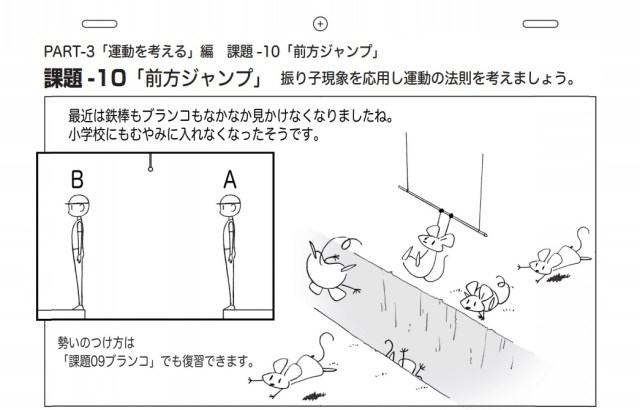
Subtitled as “The First Steps Towards Understanding the Principles of Motion,” the assignment collection is offered as a free PDF download from the AJA on its website here, and divides its drills into four sections: Form, Physics, Movement, and Application. The drills, developed and selected by veteran animator/animation director Kazushige Yusa (whose credits include anime movies in the Touch and Street Fighter II franchises) with the backing of studios such as Sunrise, Bones, Studio 4°C, and Tezuka Productions, are accompanied by example solutions and explanations.
Many of the drills give you two pieces of artwork and ask you to draw in a number of intermediary steps, which would correspond to either in-between or key animation frames. The Assignment Collection also encourages artists to keep in mind what sort of action or mood the scene is trying to create. For example, this driving drill asks for two different in-between frames, one showing the car being driven at a slow and safe pace, and another for if the driver is speeding along at a faster rate towards an urgent destination.
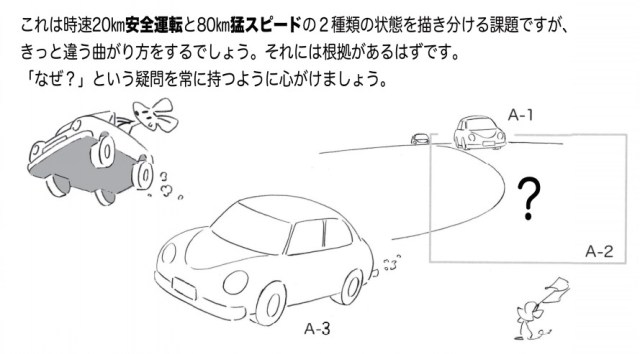
It’s not just the item in motion that artists are instructed to consider, either. Here, for instance, the drill is to draw this credit card being tipped over as it’s tipped over by the mouse and reaches a 45-degree angle, while accounting for how much the bottom edge of the card should slide or sink depending on how hard or soft the surface is.
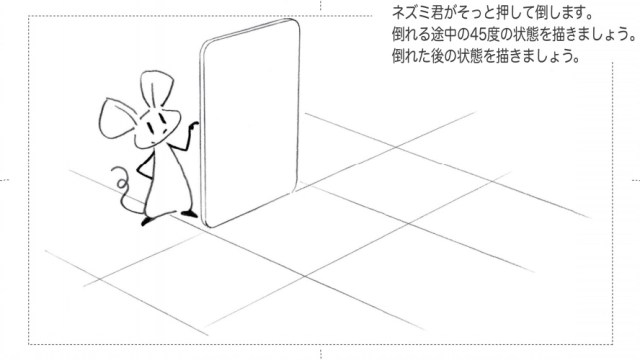
Then there’s this drill, which asks you to add the necessary frames so that this man can swing the hammer in a continuous loop. But while frame one shows the hammer raised and frame four shows it hitting the target, the drill doesn’t just want you to draw frames 3 and 4, but five and six as well, since the posing and hand placement should be different between when a person is swinging a hammer down and when they’re lifting it back up.
▼ In total, the 123-page assignment collection covers 14 drills.
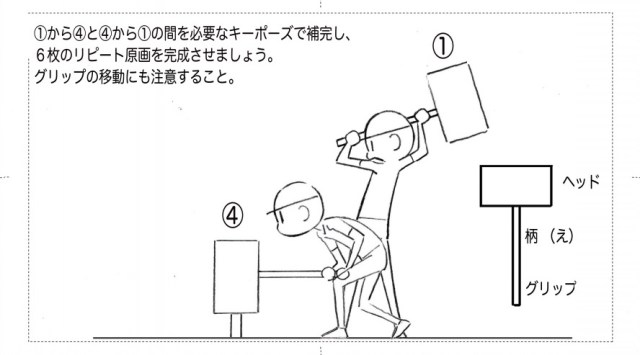
The ability to think out these sequences in their own heads is arguably of especially great importance to artists working in the anime industry. Historically, Japan’s animation studios haven’t had the sort of budgets that allow them to chase the nearly live-action-film-smoothness of, say, a Disney film. However, anime has achieved worldwide popularity in large part due to its artists ability to create dynamic movement even with a limited number of frames to work with, and so the ability to create stylized, emotionally expressive animation outside of what a CG modeling program dictates.
Source: Association of Japanese Animations via IT Media
Images: Association of Japanese Animations
● Want to hear about SoraNews24’s latest articles as soon as they’re published? Follow us on Facebook and Twitter!

No hay comentarios:
Publicar un comentario